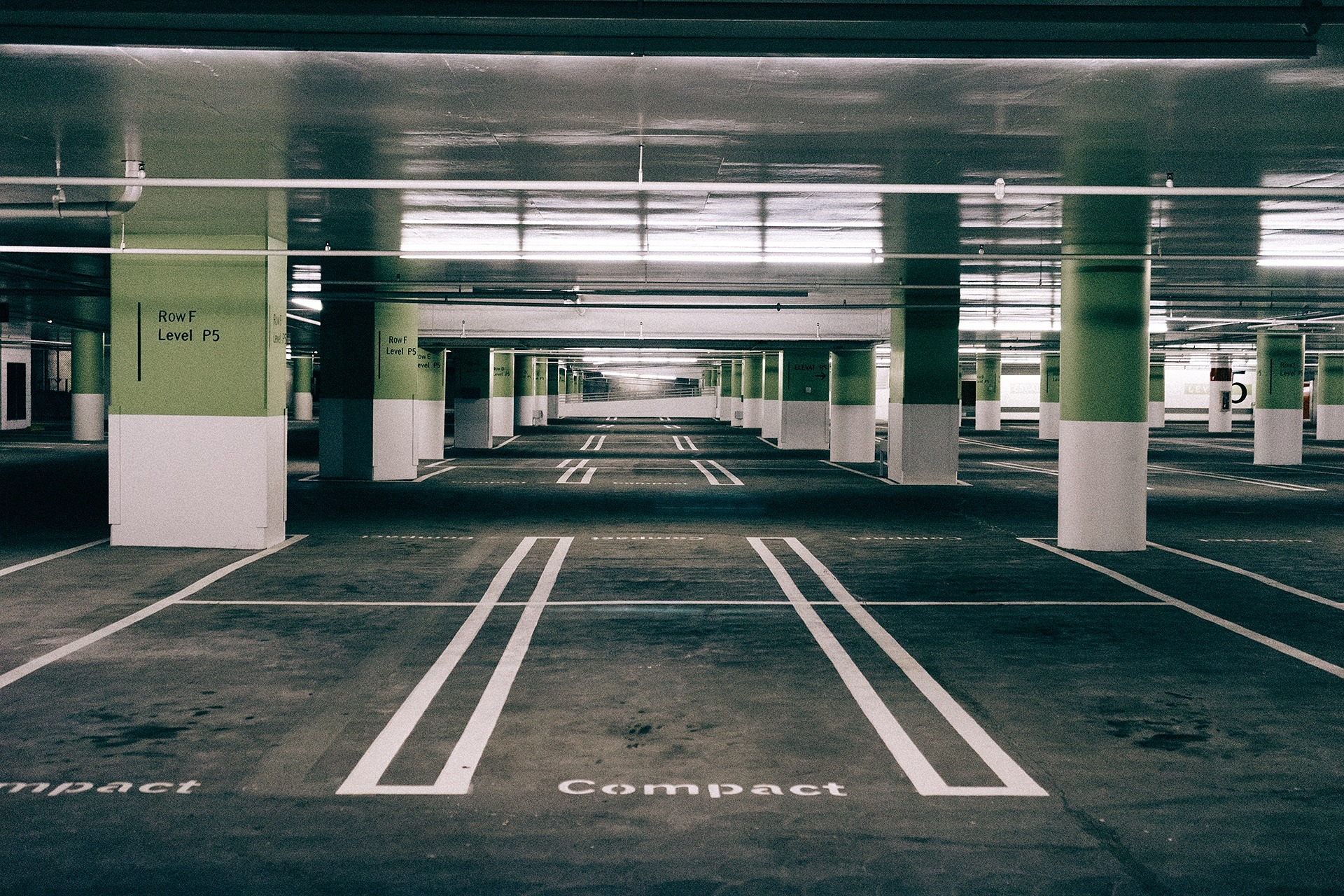How Smart Parking Management Transforms the Mobility Landscape

Smart parking systems are not just technology gadgets, they are a true revolution reshaping urban mobility and space management. But how exactly does this technology work? What tangible benefits does it offer to users, companies, and society as a whole? Let’s dive into an innovation that transforms parking lots into connected, data-driven service hubs and supports real-time monitoring.
What Is a Smart Parking Management System?
The concept of smart parking (also known as connected parking) refers to the use of Information and Communication Technologies (ICT) in parking management. The goal is simple: optimize the use of available spaces to radically simplify the driver experience. First emerging in the early 2010s, the concept has evolved from a simple idea to a key element of modern urban planning. It's no longer just about knowing if a parking lot is full or empty, but about managing flows in real time, anticipating needs, and integrating parking into a much broader service ecosystem.
A smart parking management system transforms a static space into a dynamic and responsive environment. With a mix of hardware and software, it collects, analyzes, and shares crucial information to make parking smoother, safer, and more efficient.
From Connected Parking to the Smart City
Far from being a standalone technology, smart parking is a fundamental building block of the Smart City. The Smart City concept aims to use technology to improve citizens’ quality of life, make resource management (energy, water, waste) more sustainable, and optimize public infrastructure. Parking management plays a major role in this vision. Studies estimate that the search for parking can account for up to 30% of city center traffic, creating congestion, pollution, and frustration.
By streamlining parking, smart parking systems contribute directly to Smart City goals:
- Reducing traffic congestion and related CO₂ emissions
- Improving air quality and reducing noise pollution
- Optimizing urban space, enabling more efficient land use
Smart parking becomes an essential link in the mobility chain, working alongside public transport, car-sharing services, and other mobility solutions.
The Case of Corporate Parking
Although often associated with public spaces, the concept is just as relevant (if not more) for corporate parking lots. Often seen as a “black box,” these lots present constant management challenges: unknown occupancy rates, underused allocated spaces, employee stress due to uncertainty about parking availability or where to go when multiple lots exist. A smart parking management system provides a clear answer to these challenges.
By digitizing access and space allocation, Parking Management System like Izix help managers turn this underutilized asset into a driver of performance and employee well-being. A flex parking policy becomes possible, dynamically assigning spaces based on real needs. Employees can reserve a space via an app, check real-time availability, and access parking smoothly. Meanwhile, the company gets accurate data to optimize its real estate and mobility policies.
How Does a Smart Parking Solution Work?
The efficiency of a connected parking solution relies on a technological ecosystem where hardware and software work together. Each component plays a precise role, from vehicle detection to strategic decision-making by the manager.
Data Collection: Sensors and IoT
At the core of the system are devices designed to detect vehicle presence. This real-time data collection is the foundation of the entire solution. Several technologies are used:
- Access control systems : These systems regulate which vehicles are allowed to enter or exit the parking facility.
- Occupancy sensors: Installed on each space (magnetic, ultrasonic) or at entry/exit points, they detect whether a space is taken
- License Plate Recognition (LPR) cameras: Positioned at entries and exits, they identify vehicles and, through image analysis, can also determine occupancy levels
These IoT-connected devices continuously transmit valuable data: occupancy rates, parking duration, vehicle turnover, and more.
The Software: The System’s Brain
Hardware would be useless without the intelligence of software to process and add value to the collected data. This is where a Parking Operating System (Parking OS), like our solution, comes into play. It doesn’t just receive data, it interprets it and coordinates the entire parking system.
Our approach is software-first: we connect to existing hardware (barriers, LPR cameras, EV chargers), or install simple plug-and-play technology that does not interfere with existing infrastructure. This allows for the digitization of existing parking without heavy investments in new proprietary equipment. The software becomes the central control tower.
Key features of this software include:
- Access management: Define precise rules (who can enter, when, and to which space), based on user rights (employees, visitors, subscribers) and credentials (badge, QR code, license plate)
- Real-time occupancy algorithms: Calculate and predict availability to guide users efficiently
- Dashboards and reporting: Provide managers with a clear view of parking usage (occupancy rates, peak times, mobility mix, avoided CO₂ emissions) for data-driven decision-making
User Experience: Apps and Guidance
The final piece, and not the least, is the interface for the end user. With intuitive mobile or web apps, drivers become active players in their parking journey. They can:
- Check real-time availability before leaving
- Reserve a space in advance to secure it
- Be guided directly to an available space via dynamic signs
- Handle payments digitally
This user-friendly experience reduces stress and wasted time, turning a daily hassle into a smooth and predictable moment.
Note
Integration is key. A high-performance parking system should not operate in isolation. Thanks to open APIs, it must integrate with other company systems (HR, mobility apps) and third-party services (reservation platforms, navigation apps like TomTom or Here), creating a unified mobility ecosystem.
The Concrete Benefits of Smart Parking
Implementing a smart parking management system generates benefits at every level, creating a positive cycle for all stakeholders: drivers, public and private parking operators, and the broader community.
Here is a detailed list of key benefits:
- Space and occupancy optimization: The concept of shared use (also called pooling) is central. It allows different users with non-overlapping needs (residents at night, employees during the day) to share spaces. With data, parking lots can be smaller but serve more people, limiting land sealing
- Simplicity and time savings: Drivers locate a space instantly, greatly improving satisfaction
- Reduced congestion and emissions: By guiding vehicles quickly, unnecessary city and parking lot traffic is reduced. Less idling means less CO₂ and noise
- Increased security: Digital access control (LPR, QR codes) ensures only authorized users can enter, while providing a full entry/exit log
- Revenue maximization: Data allows managers to apply dynamic pricing strategies (peak hours, duration) and monetize unused spaces, unlocking new income sources
- Strategic decision-making support: Usage reports help adjust supply to demand, plan maintenance, and anticipate future needs (e.g. EV charger installations)
Smart Policy in practice
Most parking lots are rarely 100% full. A salesperson leaves for a client visit, a fleet vehicle returns from its route, a night-shift worker arrives, or teams rotate in shifts. Pooling takes advantage of these complementary patterns. A smart system manages this dynamic sharing, increasing a lot’s effective capacity by over 40% without building a single extra space.
Deploying a Smart Parking Solution: Challenges and Considerations
While highly beneficial, the shift to connected parking comes with its own challenges. Careful planning is key to success.
Technical and Financial Challenges
One of the most cited barriers is the initial investment. Sensors, new barriers, or LPR cameras can be expensive, especially for smaller sites. However, this must be weighed against the cost of traditional parking construction and the long-term operational gains.
This is why our software-first approach offers two simple and cost-effective options: either integrate with existing infrastructure or install lightweight, non-intrusive plug-and-play technology. In both cases, the solution is low-cost, reduces entry barriers, and allows for a quick return on investment.
Maintenance, Adaptation, and Data Security
Technology requires ongoing maintenance to remain reliable. Software updates and equipment monitoring are essential. There will also be a learning curve for managers and users, who must become familiar with new tools. Clear communication and proper support are crucial.
Finally, data security and privacy are vital. Smart systems collect potentially sensitive data (license plates, usage habits). It is essential to work with an expert partner like Izix who ensures compliance with regulations (such as GDPR) and implements strong security measures.
Expert Tip
For a successful deployment, start with a precise audit of your needs and infrastructure. A modular approach is often best: begin with essentials like access control and real-time visibility, then add advanced features such as reservations, dynamic pricing, or EV charger management. This approach keeps costs in check, delivers fast results, and allows adjustments based on user feedback.
Conclusion
Smart parking management systems are becoming essential tools for transforming urban mobility. Combining IoT technologies, real-time data analysis, and intuitive user interfaces, they optimize parking operations, improve traffic flow, and reduce environmental impact. The benefits are numerous for users, managers, and city planners, contributing to a more sustainable future.
Digital parking projects, supported by open platforms like the one offered by Izix, demonstrate that the transformation of urban parking is not only possible but already underway. Success depends on good preparation, seamless integration with existing infrastructure, and regular performance monitoring. The Smart City vision becomes a reality through solutions that simplify daily life while preserving urban resources.
In short, smart parking is not just a technological innovation, it is a new way of designing and living urban mobility. Its impact on operational efficiency and quality of life makes it a key driver of future urban development.
FAQ's
Still have questions?
Switch to smart parking
See how our solution optimizes your spaces and streamlines mobility across your sites.
Book a demo
.png)
.jpg)
.jpg)
